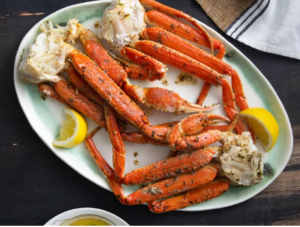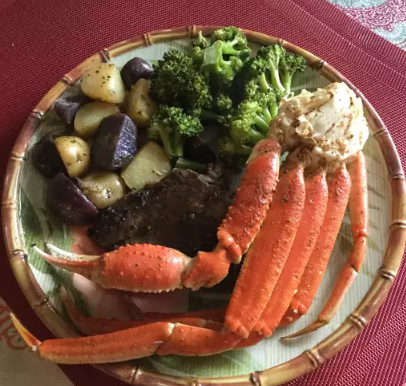Factors Influencing Crab Leg Selection
Taste and Texture Comparisons
- Flavor Profiles of Different Crab Types
- Alaskan King Crab: Noted for its sweet and rich flavor, which is more robust compared to other types.
- Dungeness Crab: Known for a nutty, sweet taste that is less briny than other seawater crabs.
- Florida Stone Crab: Offers a uniquely sweet taste, with the meat being incredibly tender and juicy.
- Blue Crab: Highly prized for its sweet, delicate flavor which is often considered the best among crabs.
- Snow Crab: Generally milder and slightly sweet, popular for its delicate texture.
- Texture and Meat Yield Considerations
- Alaskan King Crab: Thick and meaty legs, providing substantial yield with firm textured meat.
- Dungeness Crab: Meat is flaky and tender, easy to extract from the shell.
- Florida Stone Crab: The claw meat is dense and breaks apart easily, making it distinct from body meat.
- Blue Crab: Although labor-intensive to pick, meat is very tender and flaky.
- Snow Crab: Legs are thinner and the meat is stringier, but still easy to extract and enjoyable.
Availability and Seasonality
- Best Times to Purchase Different Types of Crabs
- Alaskan King Crab: Best purchased during the fall and early winter months, as the commercial fishing season is very short.
- Dungeness Crab: Peak season runs from December through April, aligning with West Coast colder waters.
- Florida Stone Crab: Available from mid-October to mid-May, the legal harvest period in Florida.
- Blue Crab: Summer months, especially from May through August, are ideal for catching Blue Crabs at their peak.
- Snow Crab: Typically harvested in late winter and early spring, making this the best time to buy.
- Regional Availability
- Alaskan King Crab: Predominantly available in Alaska and shipped globally due to high demand.
- Dungeness Crab: Mainly found along the western coast of North America, from Alaska to California.
- Florida Stone Crab: Mostly available in Florida and the Gulf coasts, limited distribution outside these areas.
- Blue Crab: Concentrated in the Chesapeake Bay area but found along the entire East Coast.
- Snow Crab: Found in cold waters in the North Atlantic and North Pacific, widely available due to abundant supply.
This section will guide readers through understanding the sensory and practical aspects of selecting crab legs, including the best times and places to purchase them for optimum freshness and quality.


